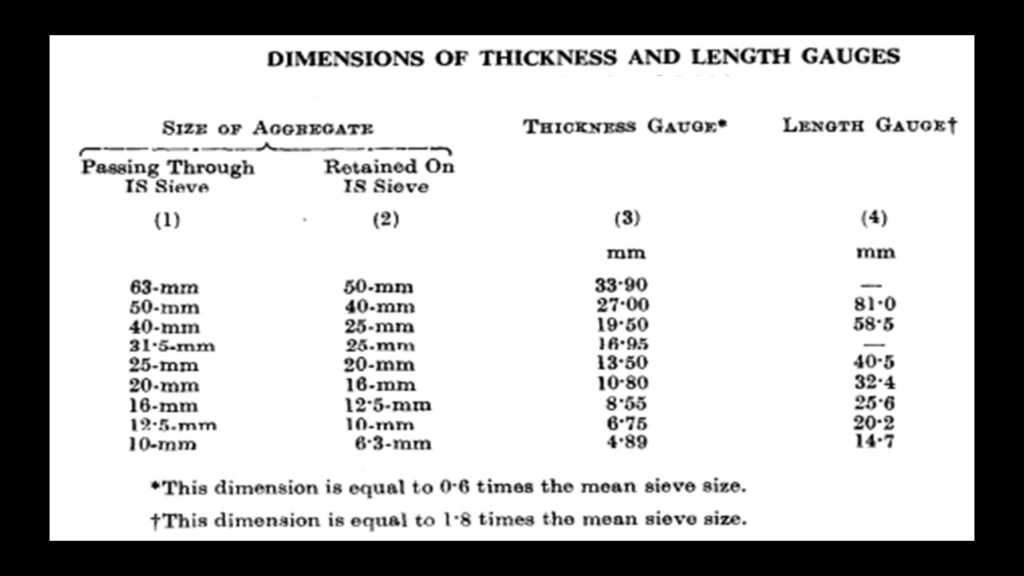Shape test on coarse aggregates constitutes flakiness Index and elongation index tests. The particle size and shape of aggregate is one of the major factors affecting the quality of the concrete.
Shape test on Coarse Aggregates
- Flakiness index test
- Elongation index test
Must read : Aggregate crushing test- Strength of aggregate
Must read : Bitumen – 9 lab tests on bitumen for flexible pavements.
Shape test on coarse aggregate – Flakiness index test
The particle shape of aggregates is determined by the percentages of flaky and elongated particles contained in it. for concrete and construction of bituminous works the presence of flaky and elongated particles are not suitable and cause failures and breaking during heavy loads.
The Flakiness index of aggregates is the percentage by weight of particles whose least dimension (thickness) is less than three- fifths (0.6times) of their mean dimension. This test is not applicable to sizes smaller than 6.3mm.
The Elongation index of an aggregate is the percentage by weight of particles whose greatest dimension (length) is greater than nine-fifths (1.8times) their mean dimension. This test is not applicable for sizes smaller than 6.3mm.
Flake materials may cause voids in concrete and has to be kept under limit to ensure the quality of the concrete.
Relevant IS codes:
- IS:2386(PartI)-1963
Apparatus used
- Weighing machine
- Metal gauge
- IS sieve
Test procedure
First we have to find the flakiness index
- For finding the flakiness index, we have to test at least 200 pieces of any fraction and weigh them.
- Then sieve the sample through IS sieves according to the table below.
- After that to determine the flakiness index separate the aggregate retained in the sieve.
- Then pass each aggregate through the corresponding slot in the thickness gauge.
- Finally, we calculate the flakiness index.
- The flakiness index is the total weight of material passing through the gauge to the total weight of the sample. It is expressed in terms of percentage. Weigh the flaky material passing the gauge to an accuracy of at least 0.1 per cent of the test sample.
- The formula for flakiness index is
F.I = (Weight of aggregate passing through the slot of the thickness gauge / Total weight of the sample) * 100
Must read : Los Angeles abrasion test on aggregates
Shape test on Coarse Aggregates- Elongation index test
The presence of elongated particles in the aggregate is undesirable for construction. Also, this shape test is made in coarse aggregate. The elongation shape test is not applicable for aggregates with a smaller size than 6.3 mm.
Relevant IS codes:
- IS:2386(PartI)-1963
Apparatus used
- Weighing machine
- Metal gauge
- IS sieve
Test procedure
- For finding the flakiness index, we have to test at least 200 pieces of any fraction.
- Then sieve the sample through IS sieves according to the table below.
- After that pass, each fraction through the gauge individually.
- Now using a weighing machine, weigh the total amount of fraction retained.
- Finally, we calculate the elongation index.
- The elongation index of an aggregate is the weight of the particle whose greatest dimension is greater than 1.8 times its mean dimension.
- The formula for elongation index is
E.I = Weight of the aggregate retained on length gauge / Total weight of aggregate x 100
Conclusion
The shape tests give only a rough idea of the relative shapes of aggregates. Flaky and elongated particles should be avoided in pavement construction, particularly in surface course.



